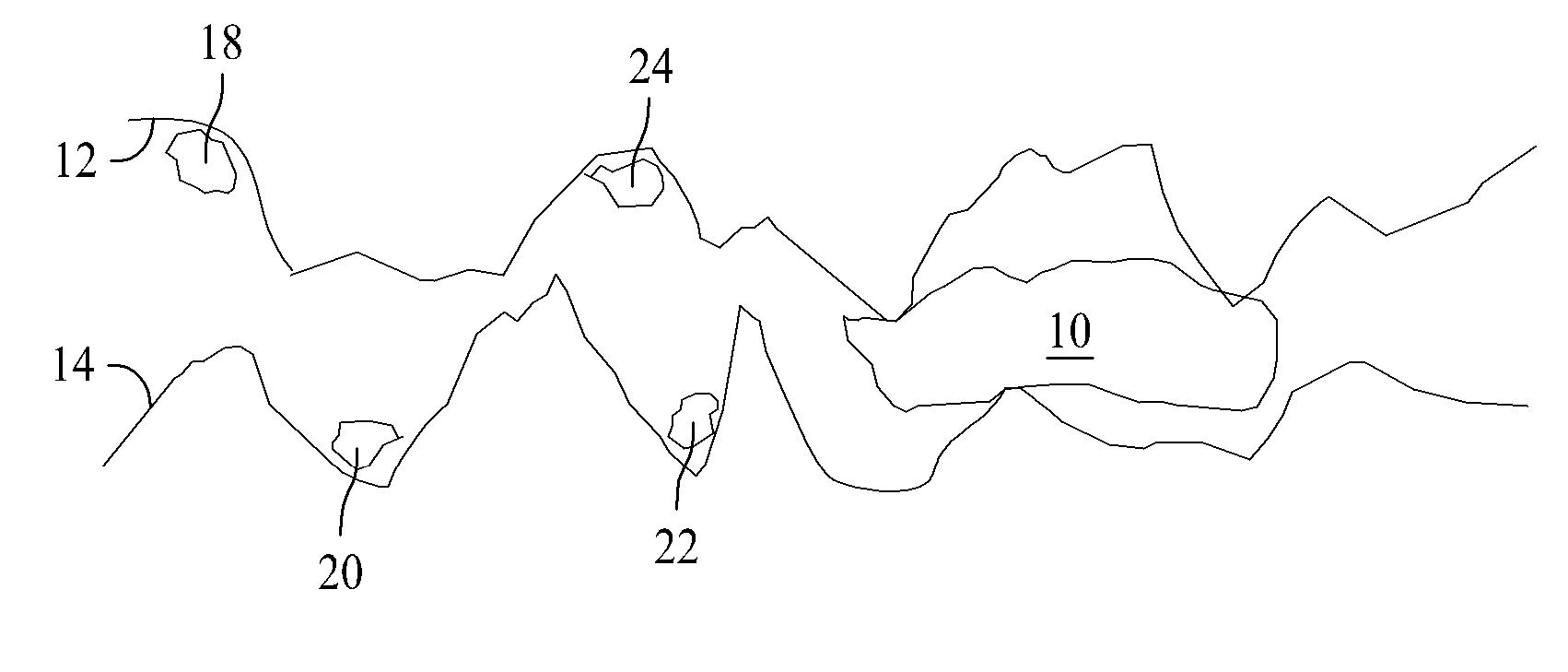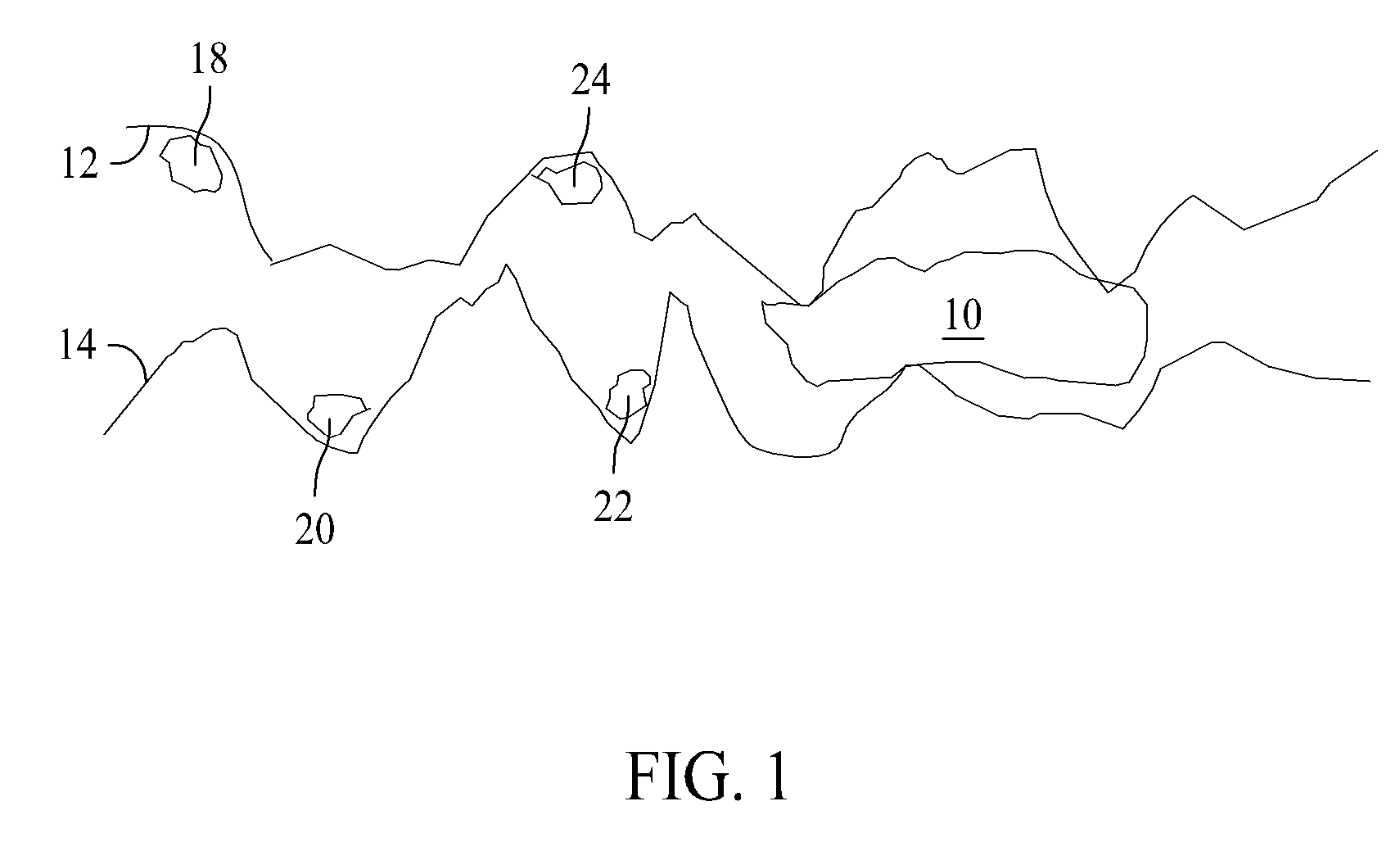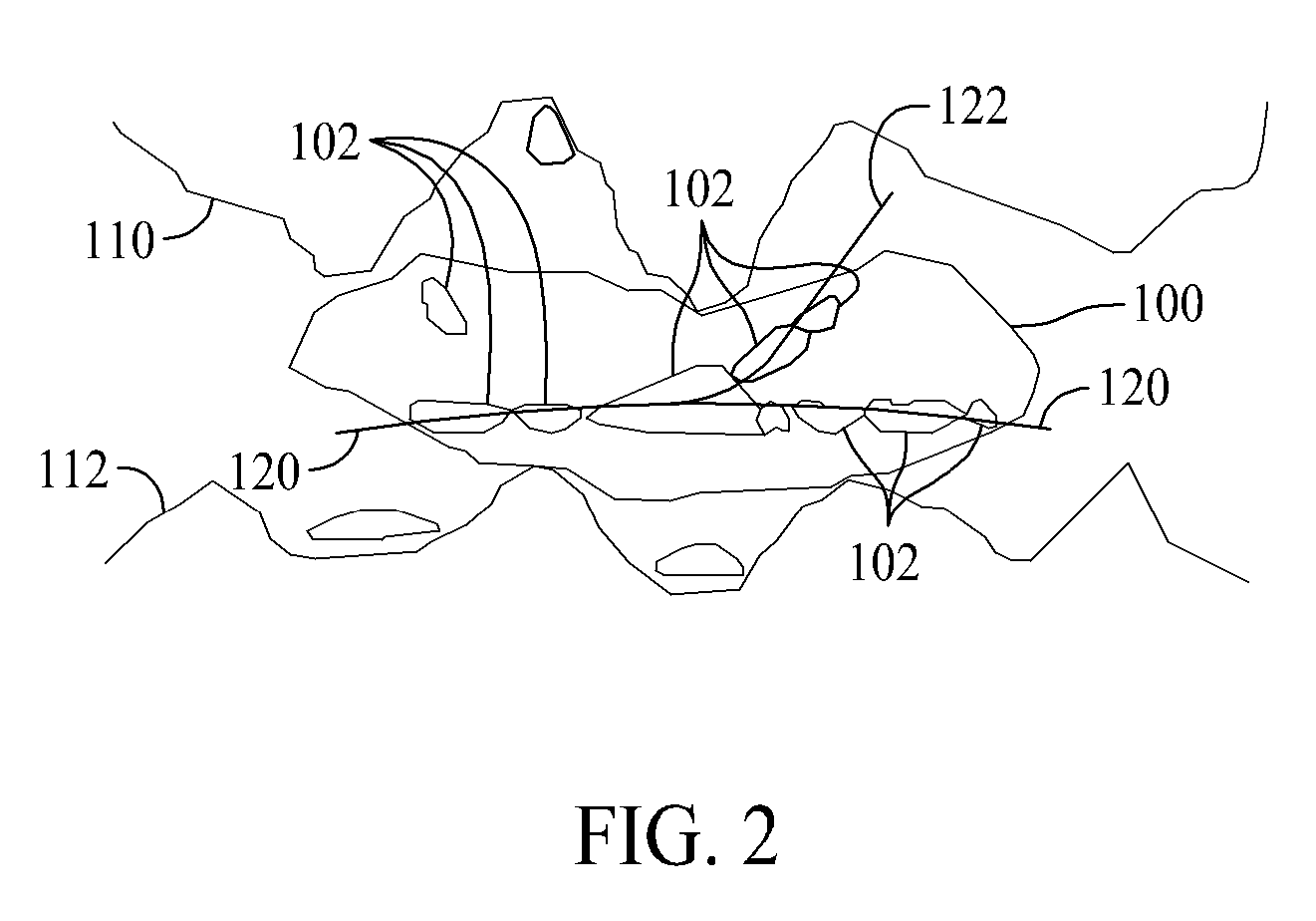Methods and compositions for reducing wear of surfaces in contact with one another
a technology of surfaces and compositions, applied in the field of machining, can solve the problems of increased heat generation, reduced quality, heat generation, wear, etc., and achieve the effect of reducing wear
- Summary
- Abstract
- Description
- Claims
- Application Information
AI Technical Summary
Benefits of technology
Problems solved by technology
Method used
Image
Examples
Embodiment Construction
[0017]The embodiments described herein relate to methods and compositions for reducing mass loss of either or of both surfaces when those two surfaces are in sliding contact with one another. Generally, the surfaces are metal, such as a drill bit and a component on which the drill bit is operating. However, the embodiments are certainly applicable in applications where one or both of the surfaces are not metal. The reduction in the loss of mass occurs through the destabilization of agglomerated wear particles that are generated during the sliding contact, or rubbing, between the two items or surfaces. In other embodiments, the agglomerated wear particles may be referred to as a “solid film” which may have a relatively higher aspect ratio that is different from substantially spherical.
[0018]FIG. 1 is a prior art illustration of an agglomerated wear particle 10 between two surfaces 12 and 14 that are in sliding contact with one another. FIG. 1 is a microscopic view which illustrates t...
PUM
| Property | Measurement | Unit |
|---|---|---|
| particle size | aaaaa | aaaaa |
| volume | aaaaa | aaaaa |
| output power | aaaaa | aaaaa |
Abstract
Description
Claims
Application Information
 Login to View More
Login to View More - R&D
- Intellectual Property
- Life Sciences
- Materials
- Tech Scout
- Unparalleled Data Quality
- Higher Quality Content
- 60% Fewer Hallucinations
Browse by: Latest US Patents, China's latest patents, Technical Efficacy Thesaurus, Application Domain, Technology Topic, Popular Technical Reports.
© 2025 PatSnap. All rights reserved.Legal|Privacy policy|Modern Slavery Act Transparency Statement|Sitemap|About US| Contact US: help@patsnap.com



